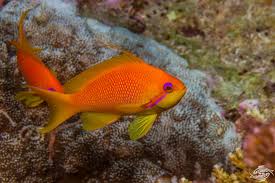Dragons and the Stories of the Universe’s Development in Chinese Culture

In Chinese culture, dragons are more than mere mythical creatures; they represent powerful cosmic forces that are intricately tied to the creation and development of the universe. As symbols of strength, fertility, wisdom, and transformation, dragons are embedded within the very fabric of Chinese cosmology, playing crucial roles in the stories of the universe’s origin, structure, and progression.
The Chinese dragon is unique, not just as a mythical being, but as a spiritual and philosophical symbol representing the eternal cycle of life, the interconnectedness of all things, and the fundamental forces that drive the universe. This article explores the dragon’s connection to the creation of the universe in Chinese mythology and its representation in ancient Chinese cosmological thought.
1. The Role of Dragons in Chinese Cosmology
Chinese cosmology is deeply intertwined with the concept of Yin and Yang, the duality that governs all of existence. These opposing forces—Yin (feminine, passive, dark) and Yang (masculine, active, light)—are constantly in dynamic balance, giving rise to everything in the universe. The Five Elements theory (wood, fire, earth, metal, water) and the flow of Qi (vital energy) also play pivotal roles in understanding the workings of the universe. Dragons symbolize the energy that flows through all things, creating harmony, balance, and transformation.
In traditional Chinese cosmology, dragons are closely associated with the element of water, often regarded as water gods or powerful beings that control rain, rivers, and seas. Water is essential to life, and the dragon, as the ruler of water, is believed to control the flow of vital energy and sustain the agricultural cycles, thereby nurturing life on Earth. The dragon’s cosmic role aligns with the interdependent cycles of nature, symbolizing life’s cyclical processes, such as birth, death, and rebirth, which are central to the Chinese understanding of the universe.
2. The Myth of Pangu and the Creation of the Universe
One of the most prominent creation myths in Chinese culture is the story of Pangu, the primordial being who is said to have created the universe. According to the myth, in the beginning, the universe existed as a chaotic, undifferentiated mass. Pangu, often depicted as a giant with the head of a dragon, emerged from this cosmic egg and began to separate the heavens and the earth. With each stroke of his axe, Pangu shaped the world, dividing Yin from Yang, light from dark, and the sky from the earth.
In this myth, the dragon plays a symbolic role in the very act of creation. Pangu’s dragon-like characteristics reflect his dominion over the forces of nature, and through his actions, he brings order and harmony to the chaos of the universe. His strength and determination were necessary for the universe’s structure to come into existence, and through him, the elemental forces of earth and water (symbolized by the dragon) were brought into balance. The dragon, in this context, represents not only the creation of life but the eternal force that sustains it.
3. The Cosmic Dragon in Chinese Mythology
The dragon is also a central figure in Chinese myths related to the cosmos. In many ancient stories, the dragon is associated with the celestial realm and serves as a bridge between the divine and earthly worlds. Chinese mythology presents the heavens as a realm above the Earth, where gods and celestial beings dwell. Dragons, with their ability to ascend to the skies, serve as the intermediaries between the heavens and the Earth, carrying messages from the divine or controlling the flow of cosmic energy.
One of the most well-known stories in this regard is that of the Azure Dragon, one of the Four Symbols (the Four Guardian Spirits of Chinese mythology). The Azure Dragon is said to govern the eastern part of the world and is often depicted as a symbol of spring, growth, and renewal. As a guardian of the East, the Azure Dragon also has a connection to the moon and water, which are seen as sources of life and energy in Chinese cosmology.
In this mythological tradition, dragons are understood to embody the movement of cosmic energies, with their interaction with the earth, water, and sky being integral to the flow of the universe’s development. These celestial dragons are often represented as serpentine beings that wind through the heavens, creating the flow of the stars, the rivers, and the balance of life across the universe.
4. The Dragon and the Five Elements
The Five Elements theory plays a fundamental role in Chinese cosmology, providing a framework for understanding the universe’s balance and development. Each element—wood, fire, earth, metal, and water—has a unique energy that contributes to the overall harmony of existence. Dragons are most closely associated with water, which represents the fluid, transformative force within the system of elements.
In Chinese thought, water is a nurturing, life-sustaining force, essential for agricultural prosperity and the health of the natural world. The dragon, as the controller of water, ensures the proper flow of energy throughout the Earth. This connection reflects the Chinese understanding of the cyclical nature of the universe, where the interaction of the Five Elements fosters continual growth and evolution. The dragon’s role in this process highlights the necessity of balance, transformation, and interconnectedness in the development of the universe.
5. The Dragon and the Yellow Emperor: A Symbol of Cosmic Order
The Yellow Emperor (Huangdi) is one of the legendary figures of ancient Chinese history and is revered as the forefather of Chinese civilization. According to legend, the Yellow Emperor was assisted in his quest for cosmic knowledge and governance by a dragon. This dragon, often depicted as a guide and protector, helped the Yellow Emperor understand the mysteries of the universe and how to rule with wisdom and harmony.
In this context, the dragon is more than a physical creature; it is a symbol of divine order and universal wisdom. The dragon’s teachings helped the Yellow Emperor maintain harmony between heaven, earth, and humanity, reflecting the ideal balance necessary for the prosperity of the universe. As such, the dragon plays a pivotal role in Chinese stories about the relationship between humans and the cosmos, signifying the connection between human rulers and celestial forces.
6. The Dragon and the Lunar Calendar: A Connection to Time and Cosmic Cycles
Chinese culture has long been deeply attuned to the cycles of nature, and the dragon plays a role in understanding the passage of time. The Chinese lunar calendar is based on the cycles of the moon, and the dragon is often linked to these cycles as a symbolic representation of the four seasons. As an elemental creature that governs the forces of water and storms, the dragon is associated with spring and the renewal of life that follows the long winter months.
In Chinese mythology, it is believed that dragons control the seasonal rains and determine the flow of the rivers, making them vital to the agricultural cycles. The dragon’s ability to usher in the rains that nourish the earth and promote growth makes it a symbol of regeneration, echoing the continuous development and evolution of the universe itself.
The dragon’s connection to time and the lunar cycles extends beyond nature’s rhythms. In Chinese spiritual thought, the dragon symbolizes the cyclical nature of the universe—where life, death, and rebirth are ongoing processes. Just as the dragon’s influence over water sustains life, its role in these cycles underscores the ongoing development of the universe in an endless loop of transformation and renewal.
7. The Dragon in the Quest for Immortality
The theme of immortality is central to many Chinese myths and philosophies, particularly in Taoism. The dragon is often associated with the quest for eternal life and the transcendence of the material world. Dragons, especially those in Taoist mythology, are seen as beings that possess great wisdom and spiritual power. Some myths even suggest that dragons have the ability to transform into immortal beings, symbolizing the ultimate achievement of spiritual enlightenment.
In Taoism, the search for immortality involves seeking harmony with the forces of the universe. The dragon is symbolic of this quest, representing the constant transformation that leads to spiritual transcendence. This transformation parallels the dragon’s role in shaping the universe—its power and energy give rise to new forms of existence, while its wisdom leads to the understanding of the cosmos.
8. Conclusion: The Dragon as the Cosmic Agent of Creation and Transformation
The dragon in Chinese culture is a far-reaching symbol that represents not only power and strength but the intricate and dynamic forces of the universe. From its connection to the Five Elements to its central role in myths of creation and cosmic order, the dragon embodies the spirit of transformation, renewal, and interconnectedness that defines the Chinese understanding of the universe. Whether as a ruler of water, a guide to immortality, or a cosmic protector, the dragon’s role in Chinese cosmology transcends simple mythological narrative—it reflects the eternal cycles of life, the flow of energy, and the continuing evolution of the universe itself.
In Chinese cultural thought, the dragon is not just a creature of myth, but an agent of the universe’s development, ensuring that cosmic order is maintained while also facilitating the growth and change that is essential to life. As such, the dragon’s enduring presence in Chinese stories and cosmology continues to represent the powerful forces that shape the universe, bringing balance, transformation, and harmony to all things.

